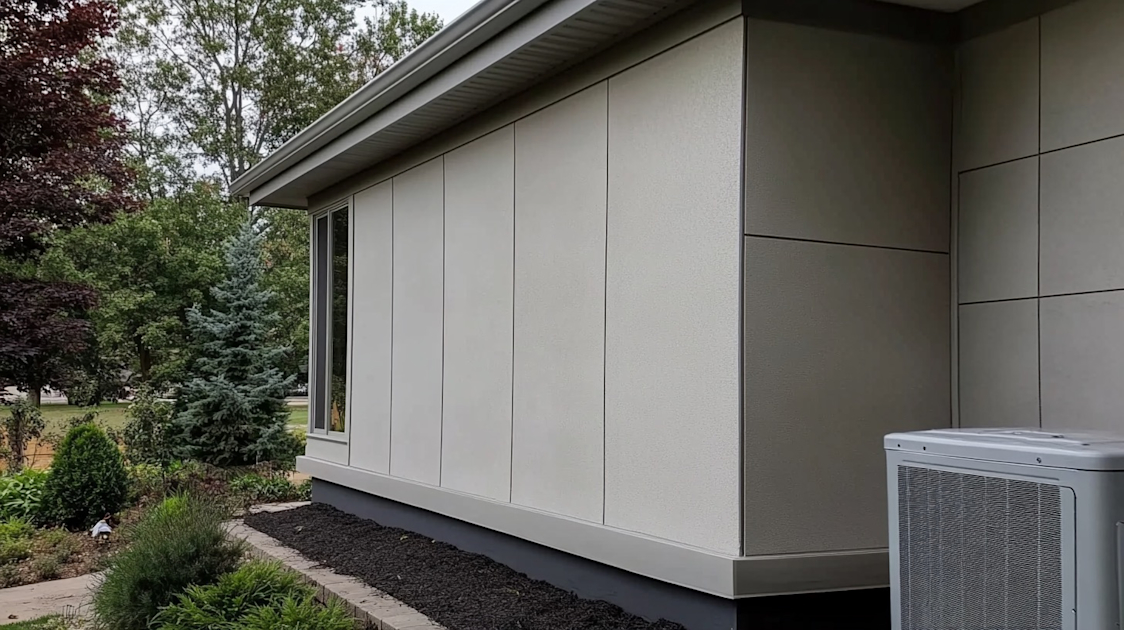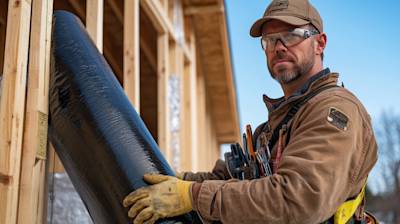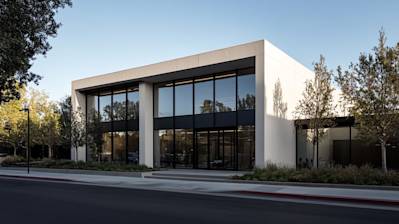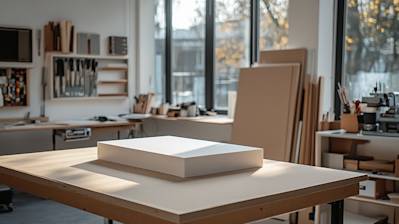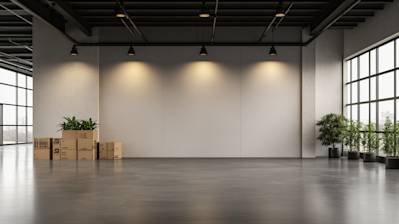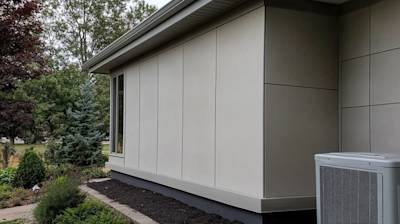Stucco has long been a prevalent siding choice, particularly for homeowners in warm climates. Among the numerous stucco systems available today, cement board stucco, also known as a cementitious stucco, stands out for its distinctive attributes. This blog post delves into the essential aspects of cement board stucco, from its evolution to installation processes, its characteristics, and benefits.
Defining Cement Board Stucco
Simply put, cement board stucco is a stucco system that uses cement backer board as the substrate to which the stucco is applied. In contrast to traditional stucco, which is affixed directly to a wire-meshed solid wall, cement board stucco is installed over a cement backer board. The cement board adds an extra layer of protection and stability, enhancing the stucco system's longevity and durability.
Cement Board Stucco: A Glimpse Into History
Stucco has been a mainstay for centuries as a resilient and adaptive building material. However, cement board stucco is considerably newer, tracing back to the late 20th century. The introduction of cement board stucco came amid concerns about the longevity and durability of traditional stucco. The cement board provides a solid backing, preventing the stucco from breaking or cracking, thus increasing its durability.
Installing Cement Board Stucco: An Overview
Installation of cement board stucco involves multiple steps, each contributing to the system's resilience and longevity.
Applying the Cement Board: The process begins with affixing the cement board to the wall using corrosion-resistant screws. The cement board serves as a sturdy, flat base for the stucco application.
Taping and Mortaring the Seams: Once the cement board is in place, the seams are taped and mudded using a fortified thin-set mortar to ensure a smooth and continuous surface.
Applying the Scratch Coat: The cement board is then treated with a scratch coat. This layer helps the stucco adhere to the cement board.
Placing the Stucco: Finally, the stucco is layered onto the scratch coat. Multiple stucco coats may be applied to achieve the desired thickness and texture.
Key Characteristics of Cement Board Stucco
Several traits distinguish cement board stucco from other siding solutions.
Weather Resistant: Cement board stucco is highly resistant to harsh weather conditions, making it ideal for use in virtually any climate.
Energy-Efficient: Its superior insulating properties make it an energy-efficient choice, contributing to lower heating and cooling costs.
Durable: As it is backed by a cement board, this type of stucco is known for its durability. It is less likely to crack or suffer from concealed damage.
Benefits of Cement Board Stucco
Choosing cement board stucco comes with a plethora of benefits, including:
Excellent Durability: Its enhanced durability makes it a cost-effective, long-term investment for homeowners.
Improved Energy Efficiency: The thermal insulation properties of cement board stucco can lead to significant energy savings.
Aesthetic Appeal: Cement board stucco is aesthetically pleasing, with a wide range of customization options available.
Soundproofing: It also provides soundproofing, contributing to a quieter and more serene living environment.
Frequently Asked Questions about Cement Board Stucco
What is the Purpose of Using Cement Board for Stucco?
For stucco to adhere effectively and last long, it needs a suitable base or substrate. Cement board serves this purpose wonderfully, providing a stationary and stable structure for stucco. It keeps the stucco in place, reduces the risks of cracks, improves overall durability, and ends up giving a flawless, even stucco finish.
How is Cement Board Stucco Installed?
Cement board stucco installation usually involves a few key steps:
- Prepping the work area: The first step involves preparing the area by removing any old siding or cladding and making sure the wall is even and ready for the cement board stucco application.
- Mounting the cement board: The cement board is then mounted onto the wall with screws.
- Applying a moisture barrier: This step is essential to prevent potential moisture damage. It usually involves putting up a layer of water-resistant material over the cement board.
- Adding metal lath: This is a metal mesh that provides a gripping surface for the stucco.
- Applying the stucco: Finally, the stucco mix is applied over the lath, usually in several coats, with each coat allowed to dry before the next comes on.
Can I Use Cement Board Stucco for Interior Walls?
While cement board stucco is more common in exterior applications, there's no reason why you can't use it for interior walls, provided you want to achieve a stucco finish indoors. Its durability and beautiful finish can definitely enhance interior spaces. However, you must consider essentials like proper interior ventilation and moisture control while using cement board stucco inside.
How Do I Maintain Cement Board Stucco?
Cement board stucco does not require much maintenance. But there are few things you could do to ensure its longevity. This includes performing regular visual inspections for cracks or damage, and cleaning it annually with water and mild detergent. If you spot a crack, it's best to address it as soon as possible - seal smaller cracks with a high-quality acrylic caulk, and larger ones may require patching with stucco.
Does Cement Board Stucco Provide Any Insulative Benefits?
Due to its thickness and the materials involved in its composition, cement board stucco does offer some insulative benefits — both thermally and acoustically. While its thermal resistance is not as much as specific insulation materials, its mass helps to moderate indoor temperature swings, resulting in potential energy savings.
Pros of Cement Board Stucco
Durability
A top advantage of Cement Board Stucco (CBS) is often seen in its high durability. Because of the nature of its components—cement, sand, and cellulose fibers—cement board stucco is generally weather-resistant and strong. Unlike wood or vinyl siding, it's able to resist damage from impacts and harsh weather. This can make it an optimal choice for both new constructions and renovations where sturdiness and longevity are highly valued.
Low Maintenance
CBS requires minimal maintenance compared to other exterior finish options. Unlike wood, it does not rot, discolor or require repainting over time. In most cases, a simple washdown with a hose is sufficient to keep CBS clean and looking new. This characteristic makes it an excellent choice for owners who want a low-maintenance yet attractive exterior.
Fire Resistance
Another major benefit of CBS is its inherent fire resistance. The cement in the board makes it non-combustible, providing an added layer of protection against fire. This can provide peace of mind for homeowners, significantly reduce the risk of fire damage, and may even result in lower insurance premiums.
Versatility and Aesthetics
Cement board stucco offers a great amount of aesthetic versatility. It can be easily textured to resemble different materials such as stone, wood, or brick, and can be colored to match a wide range of color schemes. This makes it easier for homeowners to match their home’s exterior to its overall design aesthetic.
Environmentally Friendly
The materials used in the production of cement board stucco are naturally abundant and non-toxic. Unlike vinyl siding, which emits harmful gases when burned, cement board stucco is a more environmentally friendly choice. Plus, thanks to its durability and longevity, less material waste is generated through repairs and replacements.
Cons of Cement Board Stucco
Installation Complexity and Costs
Cement board stucco installation tends to be more complex and time-consuming compared to other siding options like vinyl or aluminum siding. It requires skilled installers and the costs associated with installation can therefore be higher. This, in turn, can make the overall project more expensive.
Moisture Vulnerability
Despite being weather-resistant, CBS can be susceptible to moisture if incorrectly installed. If water is allowed to seep behind the cement board, it can cause rot in the framework of the house, and potentially lead to serious structural issues. It's essential that cement board stucco be installed properly, with correct flashing and weeping devices, to prevent water infiltration.
Repair Issues
Repairing CBS can sometimes be more difficult and expensive than other forms of siding. If the stucco cracks or cysts for some reason, it can be hard to match the texture and color when it's repaired, often leaving a noticeable patched-up look.
Lack of Insulation
Cement board stucco doesn't offer the same level of insulation as other siding materials. This could potentially increase the heating and cooling costs for a property. Additional insulation will often need to be added during installation, increasing the overall project costs.
Weight
CBS is typically heavier than other siding materials, which can make it more difficult to install and may necessitate additional structural support. This can also increase the shipping costs for the materials, adding to the overall cost of the project.
Summary
So, after all, we covered, you can see that Cement Board Stucco isn't some rocket science. It is a simple, cost-effective, and long-lasting exterior finish for buildings. Whether for commercial or residential purposes, it stands the test of time and environmental conditions. Plus, it's customizable, which means you can achieve any look or style - everything from a traditional finish to modern sleek.
Cement Board Stucco isn’t just sturdy, it also proves to be exceptionally low-maintenance. Unlike some other exteriors, you won't need to deal with constant upkeep. You don’t have to repaint or seal it regularly to maintain its shine, and it fares pretty well with a simple wash from time to time. If you're looking for a fuss-free, long-lasting exterior solution that ages gracefully, this might be your ticket.
Lastly, let's not forget about the environmental impact. Good news is, Cement Board Stucco sports a clear conscience on the environmental front too. It's made of natural components that minimize its overall carbon footprint. As we increasingly focus on sustainability and eco-friendly construction solutions, this product is a solid choice, combining aesthetics, durability, and green values into a single package.
About Atlas Stucco
Atlas Stucco is your friendly neighborhood expert in all things stucco based out of Sacramento, CA. With our team's keen knowledge and seasoned expertise, we excel at providing top-quality stucco services that reliably stand the test of time. A locally owned and operated business, we have deep roots in the community and a commitment to excellent craftsmanship. We understand the unique architectural styles and environmental stresses of Sacramento, allowing us to deliver tailored solutions for each project. Whether it's repair, installation, or maintenance, Atlas Stucco has got your walls covered!
Tags: cement board, stucco, exterior finish,

